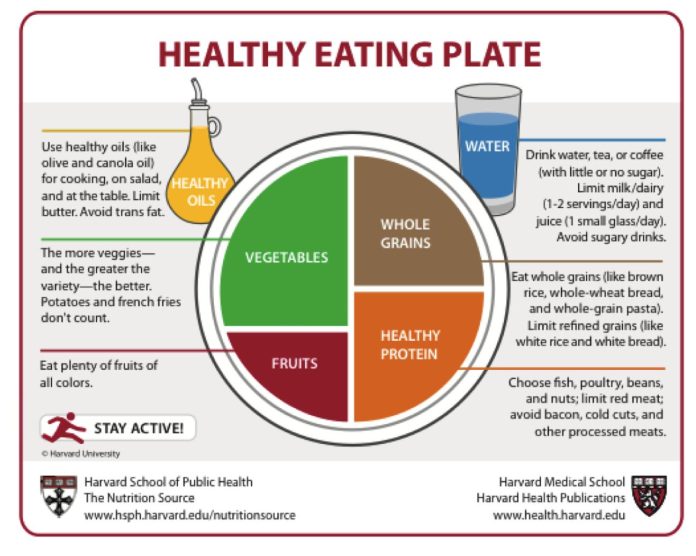In a world brimming with food options, each trip to the grocery store can feel like navigating a maze of colorful packaging and tempting promises. But hidden within the fine print lies a powerful tool: the nutrition label. Often overlooked, these labels hold the key to making informed decisions about what we consume. Whether you’re striving for a healthier lifestyle, managing dietary restrictions, or simply curious about what’s in your favorite snacks, understanding how to read nutrition labels is an essential skill. Join us as we unravel the mysteries of these labels and empower you to make smarter food choices that align with your personal health goals.
Decoding the Basics: Understanding Key Nutritional Terms
When diving into nutrition labels, understanding a few key terms can transform your shopping experience. Serving Size is where it all begins; it sets the baseline for interpreting the rest of the label. Remember, the numbers you see are based on this specific quantity, so adjust accordingly if you consume more or less. Next, keep an eye on Calories—they indicate the energy you’ll get from a serving. It’s essential for managing energy intake throughout the day.
- Total Fat: Includes all fats in the food. Look for types like saturated and trans fats—the lower, the better for heart health.
- Sodium: Often higher in processed foods. Aim for lower values to support healthy blood pressure.
- Dietary Fiber: Higher numbers are beneficial for digestion and can help you feel full longer.
- Sugars: Distinguish between naturally occurring sugars and added sugars, which you should minimize.
- Protein: Essential for muscle repair and growth, higher amounts are beneficial, especially for active individuals.
By grasping these terms, you can make informed choices that align with your health goals and dietary needs.
Spotting Hidden Sugars: The Sweet Truth Behind Labels
When perusing the aisles of your local grocery store, it’s easy to be misled by labels that boast “low-fat” or “all-natural” claims. However, these products often contain hidden sugars that can derail your nutritional goals. The key to making informed decisions is understanding how to decode these labels. Start by examining the ingredient list: sugar may masquerade under various aliases such as high-fructose corn syrup, dextrose, or evaporated cane juice. Don’t be swayed by healthy-sounding names—if it ends in ”-ose,” it’s likely a sugar.
- Check the serving size: Manufacturers often list deceptively small serving sizes to make sugar content appear minimal.
- Spot the order: Ingredients are listed by weight, so if sugar is near the top, the product is likely high in sugar.
- Look for added sugars: The nutrition facts panel now includes a line for added sugars, helping you differentiate from naturally occurring sugars.
By sharpening your label-reading skills, you empower yourself to make smarter food choices, steering clear of unwanted sugars and staying true to your dietary goals.

Navigating Fats: Choosing the Healthiest Options
Understanding fats on nutrition labels is essential for making informed dietary decisions. Not all fats are created equal, and knowing which ones to prioritize can enhance your health. Saturated fats and trans fats are often labeled as less desirable due to their association with heart disease. When scanning a label, aim for products low in these fats, often listed under “Total Fat.” Instead, focus on foods rich in monounsaturated and polyunsaturated fats, which are known to support heart health.
- Monounsaturated Fats: Found in olive oil, avocados, and nuts. They help reduce bad cholesterol levels.
- Polyunsaturated Fats: Present in fish, flaxseeds, and walnuts. They provide essential omega-3 and omega-6 fatty acids.
- Trans Fats: Often in processed foods. Look for “0g trans fat” on the label and check for hydrogenated oils in the ingredients.
- Saturated Fats: Found in butter, cheese, and red meat. Limit intake by choosing leaner cuts and low-fat dairy options.
By prioritizing healthier fats, you can create a balanced diet that supports overall wellness. Remember, moderation is key, and even healthy fats should be consumed mindfully.

Portion Perception: Aligning Serving Sizes with Your Goals
Understanding how portion sizes relate to your dietary goals is crucial for effective meal planning. When examining nutrition labels, it’s important to remember that the serving size listed might not match the amount you actually consume. This discrepancy can significantly impact your calorie intake and nutritional balance. To better align your portions with your health objectives, consider these tips:
- Visualize Your Plate: Use everyday items to estimate serving sizes. For example, a portion of meat should be about the size of a deck of cards, while a serving of pasta should resemble a baseball.
- Measure and Track: Invest in a kitchen scale or measuring cups to accurately gauge portions, especially for calorie-dense foods like nuts and cheese.
- Customize to Fit: Adjust serving sizes based on your personal goals. If you’re aiming for weight loss, consider reducing the portions of high-calorie foods and increasing vegetables.
By consciously adjusting your portions, you can maintain a diet that supports your lifestyle and health aspirations without feeling deprived. Remember, the key is not just in what you eat, but how much you eat.





